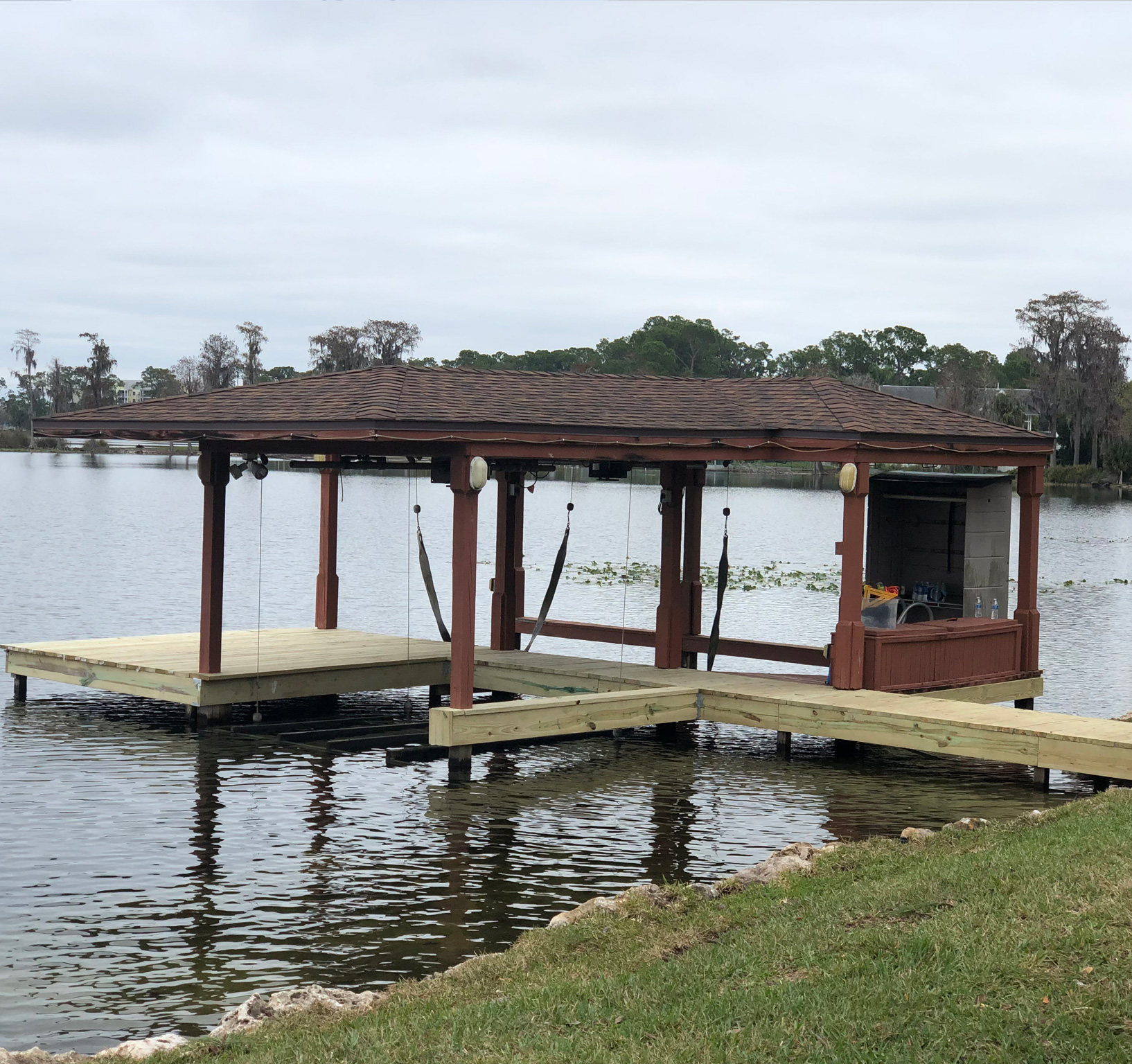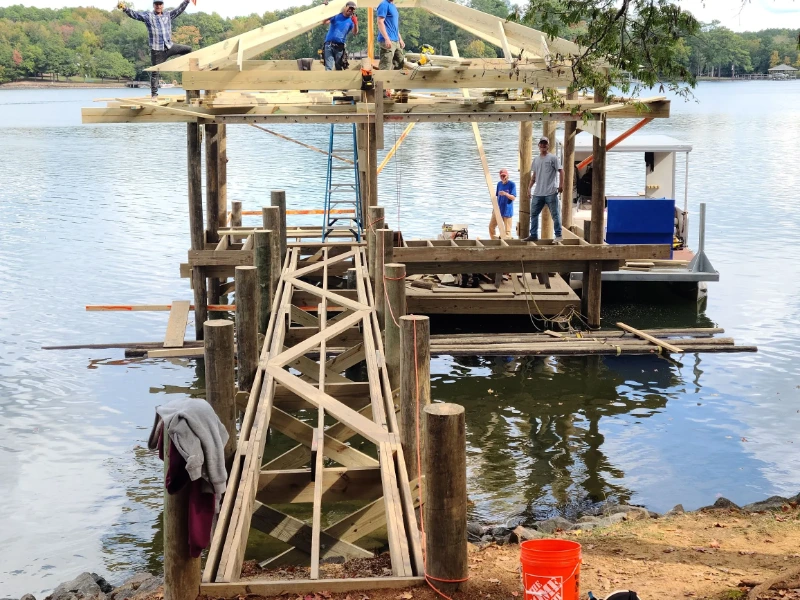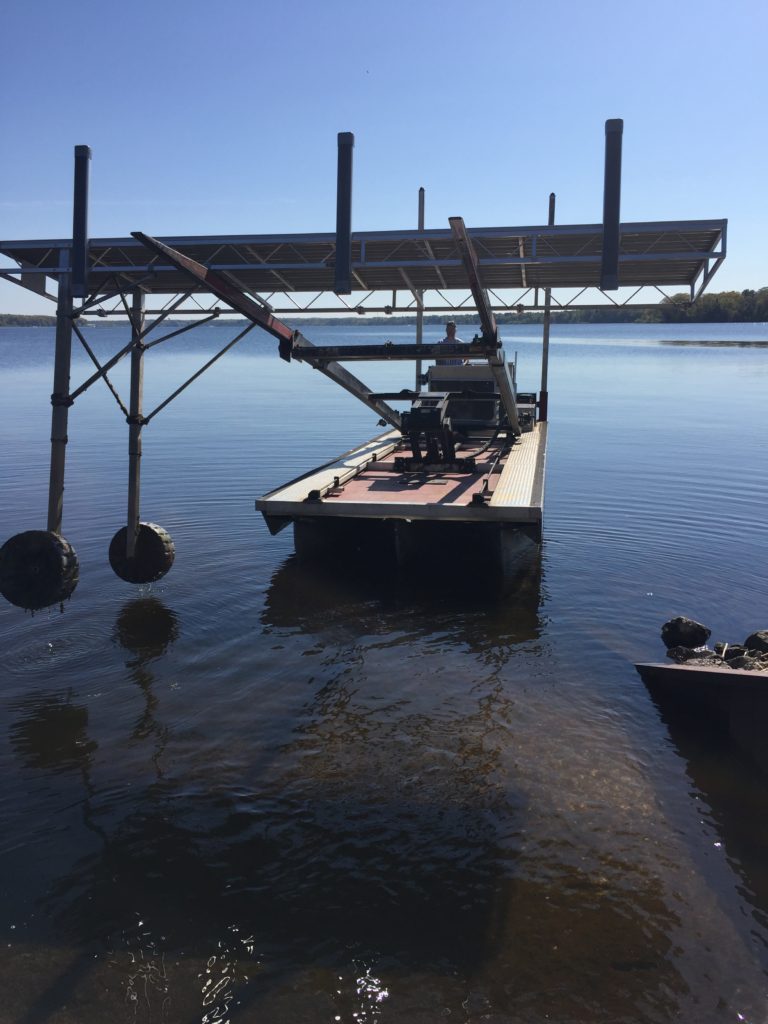Just How to Address Common Dock Fixing Issues for Safe Water Tasks

Identifying Common Dock Issues
Recognizing common dock issues is essential for maintaining the functionality and safety and security of your waterside residential or commercial property. Regular examinations can assist uncover problems before they come to be extreme, making certain both the durability of the dock and the security of those who use it.
Another typical trouble is the destruction of flotation protection devices. These tools are essential for keeping the dock buoyant, and any damage or slits can trigger the dock to listing or sink. Frequently checking for leaks or water logged floats can preempt more considerable concerns.
Additionally, algae and barnacle accumulation on the dock's surface can develop slippery and hazardous problems. This biofouling not only positions a danger to users but can likewise accelerate the damage of the dock materials.
Last but not least, inspecting for signs of corrosion on steel parts is essential. Rust can compromise the integrity of the dock's framework, making it risky. By consistently identifying these usual dock issues, you can make sure that your dock continues to be safe and secure and practical for years to come.
Repairing Rotting Timber
When attending to the concern of rotting wood on your dock, it is critical to act quickly to stop further wear and tear. Begin by thoroughly examining the whole framework to identify all influenced areas. Use a screwdriver to probe the wood; if it sinks in quickly, the wood is most likely decomposed and requires instant interest.
As soon as recognized, eliminate the deteriorated sections using a saw or chisel. Make certain to cut down to healthy, strong timber, ensuring you eliminate all compromised product. After removal, treat the staying wood with a wood chemical to stop future rot. This therapy will assist secure against wetness, which is the primary cause of timber degeneration.
Next, change the removed sections with marine-grade lumber or pressure-treated wood, which are much more resistant to water damages. Secure the brand-new pieces with stainless-steel or galvanized fasteners to stop deterioration. Furthermore, using a water-proof sealer to the brand-new wood can offer an extra layer of defense.
Securing Loose Boards
Exactly how do you guarantee your dock continues to be functional and safe for all its customers? One essential element is safeguarding loose boards, which can otherwise position substantial dangers. Loosened boards not only increase the danger of stumbling yet can also jeopardize the structural stability of the entire dock.

For reinstallation, use galvanized or stainless steel screws, as these products provide exceptional resistance to deterioration in marine settings. Make sure the screws are long sufficient to penetrate deep right into the underlying assistance structure, but not as long that they extend through the dock's surface area. Pre-drilling pilot openings can aid protect against the timber from splitting.
Lastly, preserve a normal assessment timetable to identify and deal with any kind of new issues without delay. By protecting loose boards properly, you contribute to the overall safety and durability of your dock, making it a reputable platform for water activities.
Supporting Unsteady Pilings
Guaranteeing the security of unstable pilings is extremely important to keeping a useful and risk-free dock. Unsteady pilings can compromise the entire framework, presenting considerable dangers to users and potentially leading to costly repairs. The very first step in maintaining these necessary parts is a thorough inspection. Analyze the pilings for indications of rot, damages, or moving. Make use of a degree to look for vertical positioning and guarantee they are driven deep enough into the substrate to offer appropriate assistance.
If the pilings are found to be unsteady, one reliable approach for support is the use of added bracing. Cross-bracing with treated lumber or galvanized steel can dramatically improve stability. Support the braces safely to both the pilings and the dock framework to distribute lots evenly.

Regular maintenance and regular review of the pilings' stability are important to guaranteeing long-term dock safety and performance.
Replacing Rusty Equipment
Addressing unstable pilings is simply one aspect of maintaining a dock's stability; an additional important problem is replacing rusty equipment. Over time, direct exposure to wetness and salt can cause the oxidation and rust of braces, screws, and bolts, compromising the whole structure's safety and security. Normal examination for corrosion is vital, particularly after severe climate or seasonal adjustments.
When rusty equipment is determined, instant action is needed. Begin by choosing marine-grade stainless steel or galvanized hardware, both made to withstand the harsh aquatic atmosphere. Guarantee that you have the suitable tools, such as screwdrivers and wrenches, to safely get rid of the old, rusty pieces without creating additional damages to the dock.
After getting web link rid of the rustic equipment, extensively clean the influenced areas to remove any kind of recurring rust or particles. Apply a rust-inhibiting guide to revealed metal surfaces before setting up the new hardware. Tighten all components securely to avoid future loosening, and regularly inspect the installations to guarantee continuous stability.
Changing rustic equipment not only expands the dock's life-span however additionally dramatically boosts the security of water activities. By proactively taking care of corrosion, you secure both the framework and its customers, guaranteeing a safe and pleasurable beachfront experience.
Verdict
Regular examinations and maintenance are vital to resolve usual dock repair problems and make sure risk-free water tasks. Such aggressive actions contribute to the general security and capability of dock frameworks, promoting a safe and secure atmosphere for water-based tasks.
Making certain the safety and security of water tasks hinges significantly on the appropriate maintenance and repair service of docks (Dock Repairs). These devices are essential for maintaining the dock resilient, and any type of damage or slits can cause the dock to list or sink. visit this web-site By regularly determining these common dock issues, you can guarantee that your dock remains functional and safe and secure for years to come
Ensuring the security of unstable pilings is paramount to maintaining a secure and functional dock.Routine assessments and upkeep are important to address common dock fixing problems and guarantee safe water tasks.